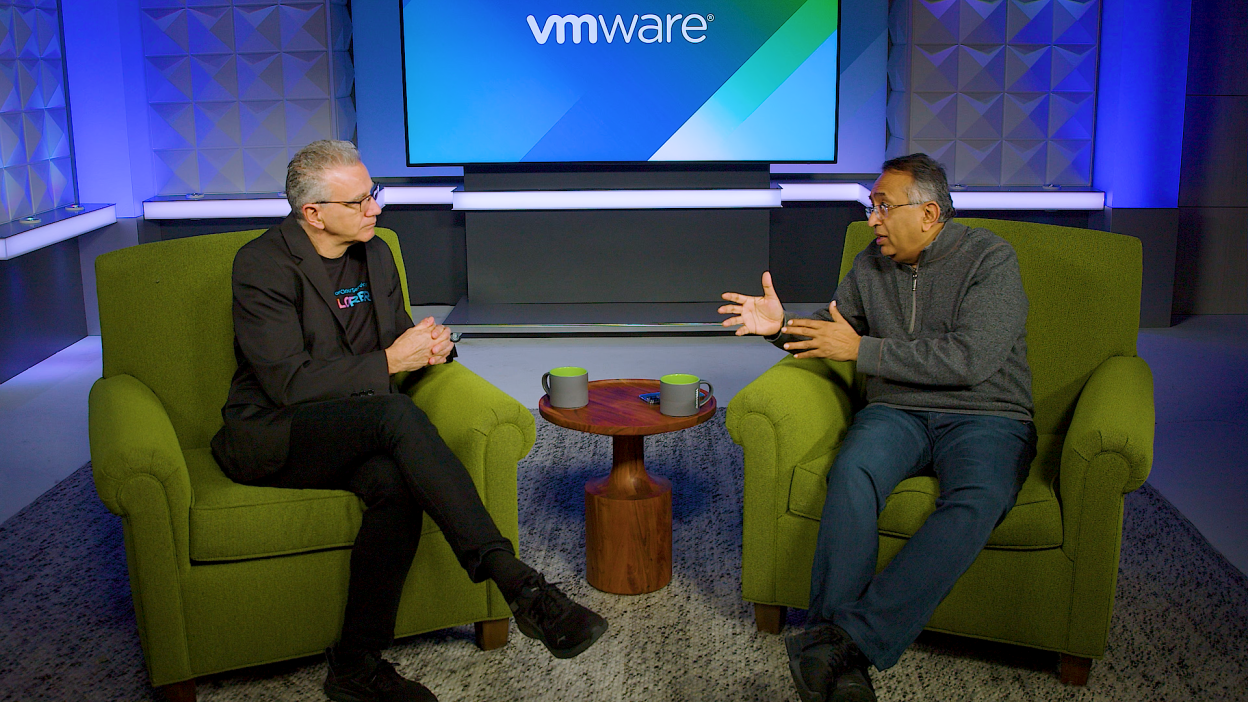Over the last couple of years, multi-cloud has become a competitive differentiator in accelerating application-centric innovation. Now facing economic headwinds and rising cloud costs, how can organizations optimize their multi-cloud architectures – using cloud services to drive growth while minimizing costs and risks? Cloud-smart organizations have found a way.
“For pretty much the whole decade after the great financial crisis, companies were free to invest…and they invested a lot in digital transformation,” explained Raghu Raghuram, VMware CEO, during April’s VMware Multi-Cloud Briefing.
Since then, the economic outlook has changed dramatically, he added. That’s required CEOs to pivot from primarily playing offense, where they’re driving digital transformation, to playing defense at the same time, where advancing transformation is coupled with controlling costs and security.
In practice, that means organizations now must focus on these key initiatives concurrently:
- Offense – Speeding development of new digital applications and making them available to consumers faster; running in multiple clouds to use the best services available, and empowering distributed employees with modern digital tools to be more productive.
- Defense – Optimizing spend on technology to get the “biggest bang for the buck;” modernizing infrastructure in data centers to be more efficient, scalable, and cost effective; and creating a Zero Trust model in the enterprise to protect data.
Maintaining Balance Is Challenging
Recent findings from the Multi-Cloud Maturity Index Research Report, a global survey conducted by market-research firm Vanson Bourne and commissioned by VMware of nearly 6,000 organizations, reveal that not all companies are successfully navigating defensive strategies. Although 95 percent surveyed believe multi-cloud architectures are critical for business success, 76 percent of multi-cloud organizations report needing to improve control of cloud expenses.
“Cost, especially cloud spend, and cloud cost management has never been a hotter topic,” Purnima Padmanabhan, senior vice president and general manager of Modern Apps and Management at VMware told the Multi-Cloud Briefing audience. This has been a year when enterprises are looking back into their spend and asking how they can get the most out of it and how they can optimize it, she added.
Contextualizing cloud costs for the business as well as benchmarking to optimize is difficult from a raw billing file, according to former customer and now VMware senior director of product management John McLoughlin.
Current customers agree. “I think the biggest challenge for most organizations today is to keep pace with the ever-changing multi-cloud world. Having a central toolset is key,” said Johan Marais, Senior Platform Services Manager of Discovery Holdings.
Discovery invested in VMware for a single view of its multi-cloud environment, putting the best tools in the team’s hands to ensure it provides the best possible service to customers.
Cloud Management Solutions and Disciplines Support Offense and Defense
Multi-cloud organizations gain advantages when they view costs in aggregate and as part of the application lifecycle — not in isolation. VMware is unique in offering a cross-cloud service that assesses and optimizes multi-cloud costs, performance, and security all the way from application development to application production, delivering:
- Visibility across services, teams, and applications.
- Benchmarking.
- Right-sizing recommendations.
- Simplified maintenance.
“There are a lot of tools but very few solutions that focus on holistically giving you that answer,” Padmanabhan added.
With the renewed interest in cost, organizations are also interested in furthering best practices around the topic, leading to a new discipline. Cloud FinOps is both a philosophy and a practice to establish capabilities for understanding the business impact of cloud cost, applying technology best practices across personas in the development lifecycle, and managing for performance, security and efficiency.
Building a Resilient Multi-Cloud Environment
Risk exists alongside cost as an obstacle for multi-cloud organizations in challenging economic times.
Resilience is particularly important and challenging in the multi-cloud world because many clouds create silos that make it difficult to enforce consistency across environments, Chris McCain, technologist director for VMware networking and security explained to the Multi-Cloud Briefing audience.
With workloads in different clouds, there’s a much larger attack surface that is also more difficult to protect. To advance in cloud maturity, or be cloud smart, requires looking at the multi-cloud environment holistically and then building a strong, consistent security posture across every environment.
McCain advocates four steps to achieve resilient architecture:
- Design with security as a core focus.
- Deploy proactive protection.
- Monitor the multi-cloud environment.
- Establish a fail-safe for rapid recovery.
To discover how to accelerate your application-centric innovation while controlling costs and protecting your data, watch the April Multi-Cloud Briefing, Navigate Economic Headwinds with a Cloud-Smart Approach.

